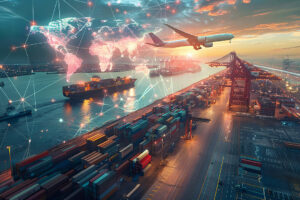
Closing a free trade deal with the EU

Bloomberg recently reported that the European Union (EU) is pivoting towards the Asia-Pacific region, actively pursuing new trade agreements with India, China, and other Asian countries. This strategic shift aims to offset potential business losses resulting from heightened US tariffs on imported goods. EU Competition Chief Teresa Ribera confirmed that the EU plans to finalize additional free trade agreements in Asia by yearend.
This development follows threats from US President Donald Trump to impose a 30% tariff on imports from Mexico and the EU starting Aug. 1 unless new trade agreements are signed beforehand. Although EU officials plan negotiations in the US, the growing uncertainty around American trade policies highlights the importance for the Philippines to diversify its international trade relationships.
Earlier, President Trump notified Japan, South Korea, Malaysia, Kazakhstan, South Africa, Myanmar, Laos, Tunisia, Bosnia and Herzegovina, Indonesia, Bangladesh, Serbia, Cambodia, and Thailand of impending 25% tariffs on their exports to the US, effective Aug. 1. Regardless of whether these tariffs materialize or bilateral agreements emerge to mitigate them, these developments underscore persistent volatility in US trade relations.
The Philippines already faces a 20% tariff on exports to the US, effective Aug. 1. Philippine officials continue to negotiate lower tariff rates through bilateral channels. The US reportedly accounted for nearly 16% of Philippine exports between January and May, with total trade estimated at $23.5 billion in the previous year.
Meanwhile, trade between the Philippines and the EU reached €16.8 billion (approximately $19.5 billion) in 2024, with the Philippines maintaining a favorable trade balance. Given the increasing tariffs imposed by the US and the EU’s renewed focus on Asia, it is timely and critical for the Philippines to actively enhance its trade partnership with the EU.
Historically, Philippine trade with Europe, particularly Spain, precedes relations with the US by over 300 years. This deep-rooted historical connection provides a strong foundation for reinforcing trade ties. Despite robust Philippine-US relations, Manila should concurrently prioritize strengthening economic cooperation with the EU to ensure long-term trade stability and growth.
Moreover, China presents a strategic gateway to Europe, offering logistical advantages through overland routes. China’s position between the Philippines and the EU creates significant opportunities for trade synergies. Philippine-made products — raw materials, intermediate goods, and finished items — can be exported to China and subsequently transported to Europe not only by sea but also via extensive rail networks.
Central to this logistical chain is the China-Europe rail corridor operated by DB Cargo Eurasia (formerly Trans-Eurasia Logistics and DB Schenker). Spanning roughly 10,000 kilometers, this corridor connects major Chinese industrial hubs such as Zhengzhou, Xi’an, and Chongqing with key European terminals in Duisburg and Hamburg. Established in 2008, this freight rail line traverses Kazakhstan, Russia, Belarus, Poland, and Germany, becoming one of the world’s longest and most strategic freight routes.
Freight volumes have surged dramatically on this route — from approximately 30,000 TEUs (Twenty-foot Equivalent Units or one 20-foot container) in 2016 to around 90,000 TEUs in 2018. By 2020, volumes exceeded 200,000 TEUs. DB Cargo Eurasia aims to reach 500,000 TEUs annually by 2025. Although geopolitical tensions and fluctuating sea freight rates led to a temporary decline in volumes for DB Cargo Eurasia in 2023, the broader China-Europe rail network handled approximately 1.9 million TEUs across 17,000 journeys.
This railway corridor offers the Philippines and other Southeast Asian countries an attractive alternative to maritime routes, potentially reducing transport times and logistical complexities. Moreover, the rail connection serves as a modern-day Silk Road, facilitating bilateral trade flows not only from Asia to Europe but also from Europe back to Asian markets.
However, maximizing the benefits of these logistical efficiencies requires favorable trade terms. Freight charges, whether rail or maritime, become significantly more competitive and beneficial when underpinned by comprehensive free trade agreements.
The Philippines and the EU commenced negotiations for a free trade agreement (FTA) in 2024. The third negotiation round concluded in Brussels in June 2025, building on earlier discussions held in October 2024 and February 2025. Given the urgency presented by escalating US tariffs, finalizing this FTA soon would provide a crucial strategic advantage.
An FTA between the Philippines and the EU would significantly boost bilateral trade, enhancing economic resilience and market access for Filipino businesses in one of the world’s largest economic blocs. It would also create a more stable environment for trade expansion, benefiting sectors such as agriculture, electronics, garments, and high-value manufactured goods. Furthermore, the FTA would stimulate investments, technology transfers, and knowledge exchange, fueling innovation and economic growth in the Philippines.
The EU’s pivot towards the Asia-Pacific region underscores a clear opportunity for the Philippines. Swiftly securing a free trade deal with the EU would not only mitigate current risks associated with US trade policies but would also strategically position the Philippines as a key partner in Europe’s renewed focus on Asian markets. Given the current global trade dynamics, this agreement would serve as a vital pillar of the Philippines’ long-term economic strategy.
Marvin Tort is a former managing editor of BusinessWorld, and a former chairman of the Philippine Press Council



